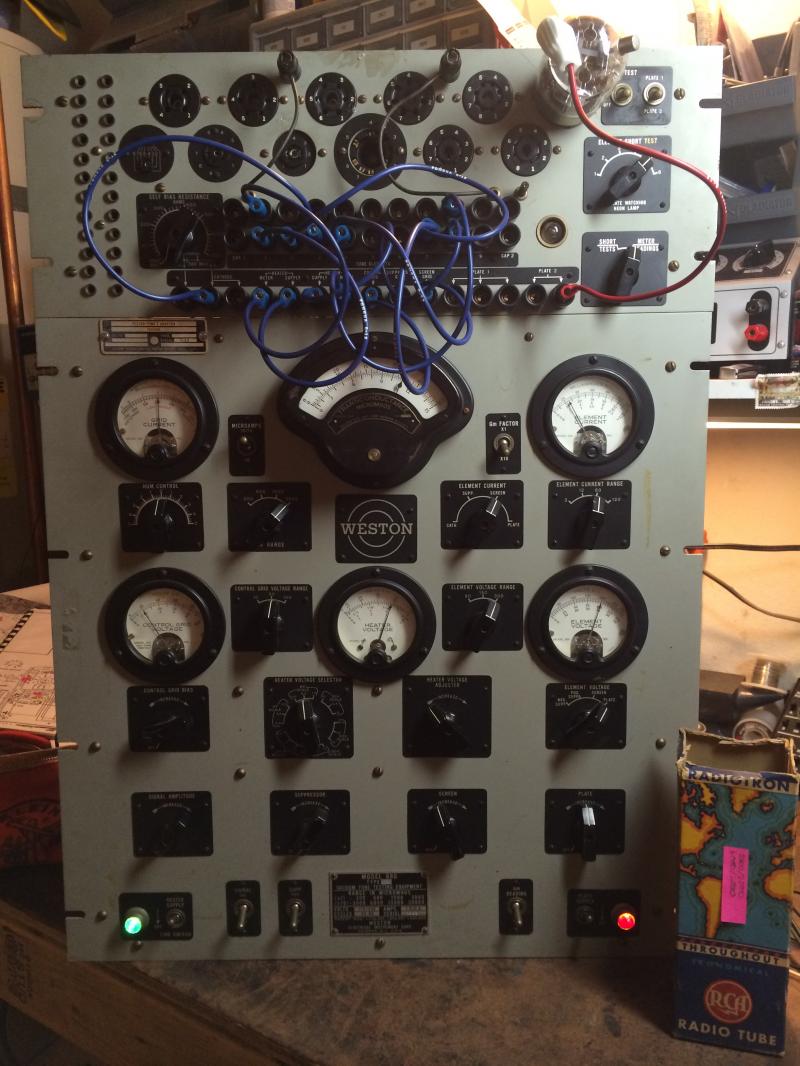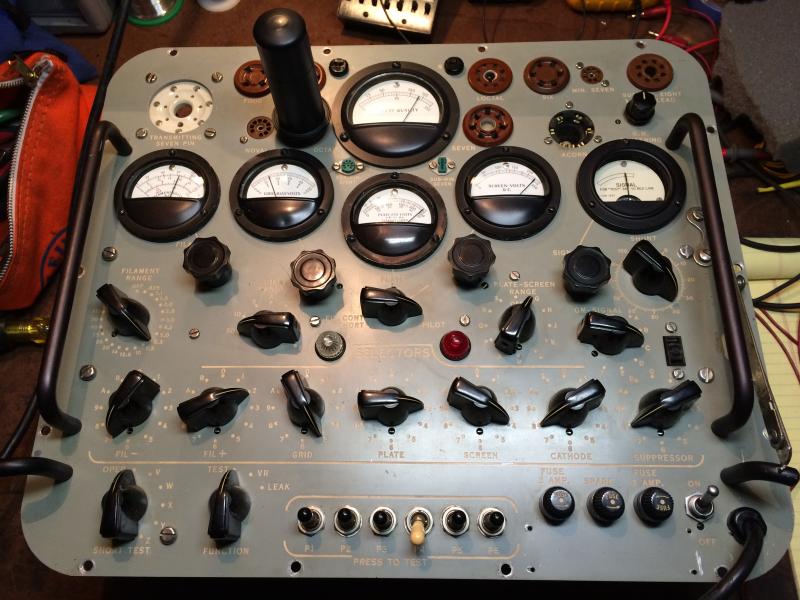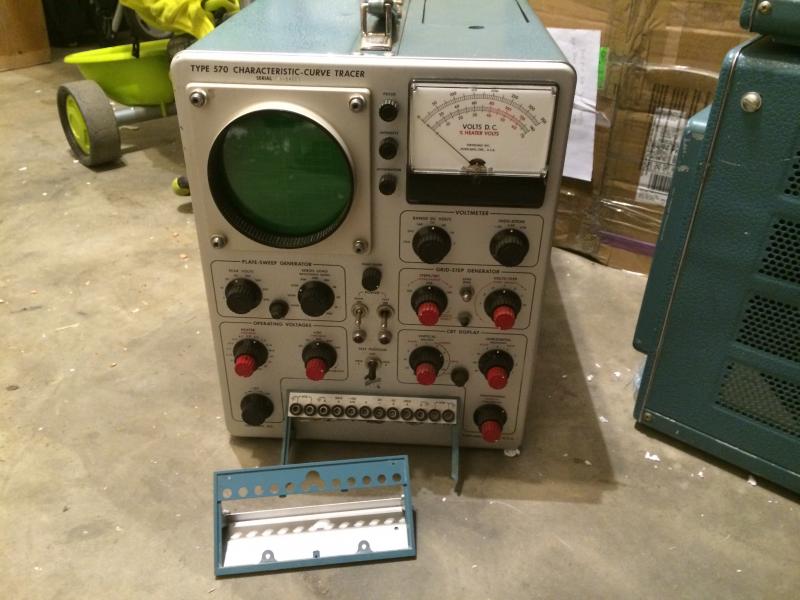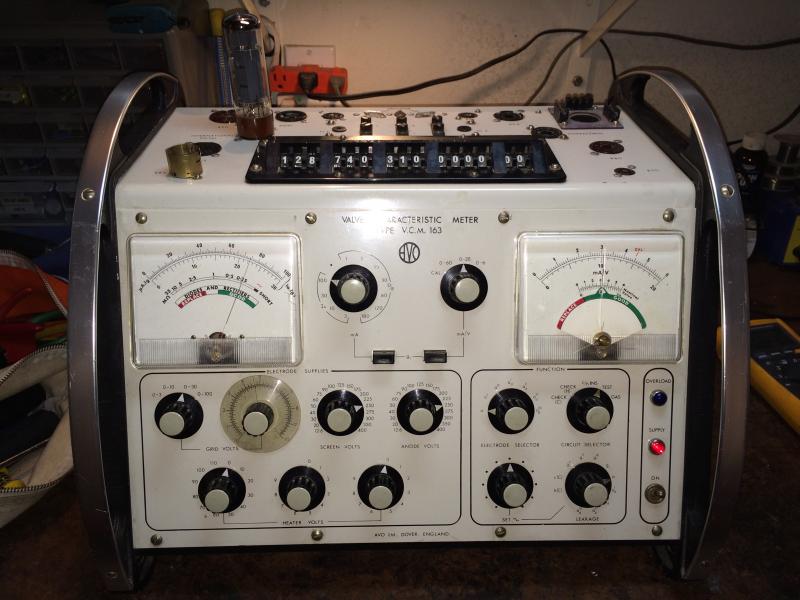Merren Audio
The Art of Audio Engineering
Merren Audio
CA
United States
ph: (310) 426-8726
sales
TUBE TESTERS The behind the scenes truth ** under Construction **
Tube Testers !!!!
Discussion of Tube Testers can stir up all sorts of controversy... The list of opinions and arguments can pile up very quickly...
One issue we can all agree on is the lack of any standardized testing between the various makes and models of tube testers. Manufacturers of tube testers typically have some type of proprietary mystic scaling system and test conditions.
Tube manufacturers did provide standards for tube testing in thier data sheets. Most times it was the 250V standard test.
In the heyday of tube testers, most testers were designed to be portable and economical for the service man and home user. Unfortunately, these cheap testers were primarily utilized for PASS or FAIL testing... Let's not forget the Drug Store testers that were also very simplistic emission testers as well.
Most tube testers are not by any means a precison or reliable device, they are a pile of stacked errors.. Essentially a big balancing act of compromises, smoke and mirrors... I am sure that the cost accounting dept had something to do with the engineering decisions while making these classic tube testers... Although I believe many of these testers were slapped together in a hurry to meet market demand and beat competitors in pricing and had no real engineering effort behind them.
The concept of an accurate Laboratory Grade tube tester is very simple, since it consist mostlty of regulated power supplies, sockets, switches and meters. The problem with building one in the old days was that the size and expense would not make them marketable to the masses. Since meters cost $$$$, many tube testers rely on the dial numbers...This is good if the voltage behind the knob is regulated and the potentiometer is known to have linearity better than 1%, if not, then your fooling yourself...
We feel that 95% of the tube testers produced out there are not very usefull and provide very little meaningfull information. Of course this statement will provoke many debates as well as plenty of rationalizing the usefullness of someone's favorite tester.
This is very understandable, since thier can be emotional attachment to tube testers for many reasons. It may be the one their father or uncle once used and handed down... It may be the one they were trained on in the Military....ect...ect...
There is always a positive side of things and even the simple tube testers have something to offer, even if it is just a PASS or FAIL test, which may be good enough for some users to get their gear back up and running and get on with their lives....while people like me spend countless hours chasing measurement perfection and miss out on other aspects of life..
Even what we refer to as the top 10 testers ...none are perfect and some require some tweaking to bring them in a bit tighter in accuracy..beyond the factory calibrations...
Here are some of my favorite testers:
WESTON 686, Russian KALIBR L3-3, English AVO-163, TV2, Tektronix 570, Triplett 3444-A, USM-118B, New London 901A...
When these testers are modifed and accurized, they will give identical results within 1% under same operting conditions...
Accurizing a tube tester requires going well beyond the Service Manual and Factory calibration procedures.. In some cases it requires substantial redesigning the circuitry .....
Over time, we will post various Tube Testers...providing Pros and Cons for each tester....
As well as solutions to these issues....
The WESTON 686 TYPE 10A
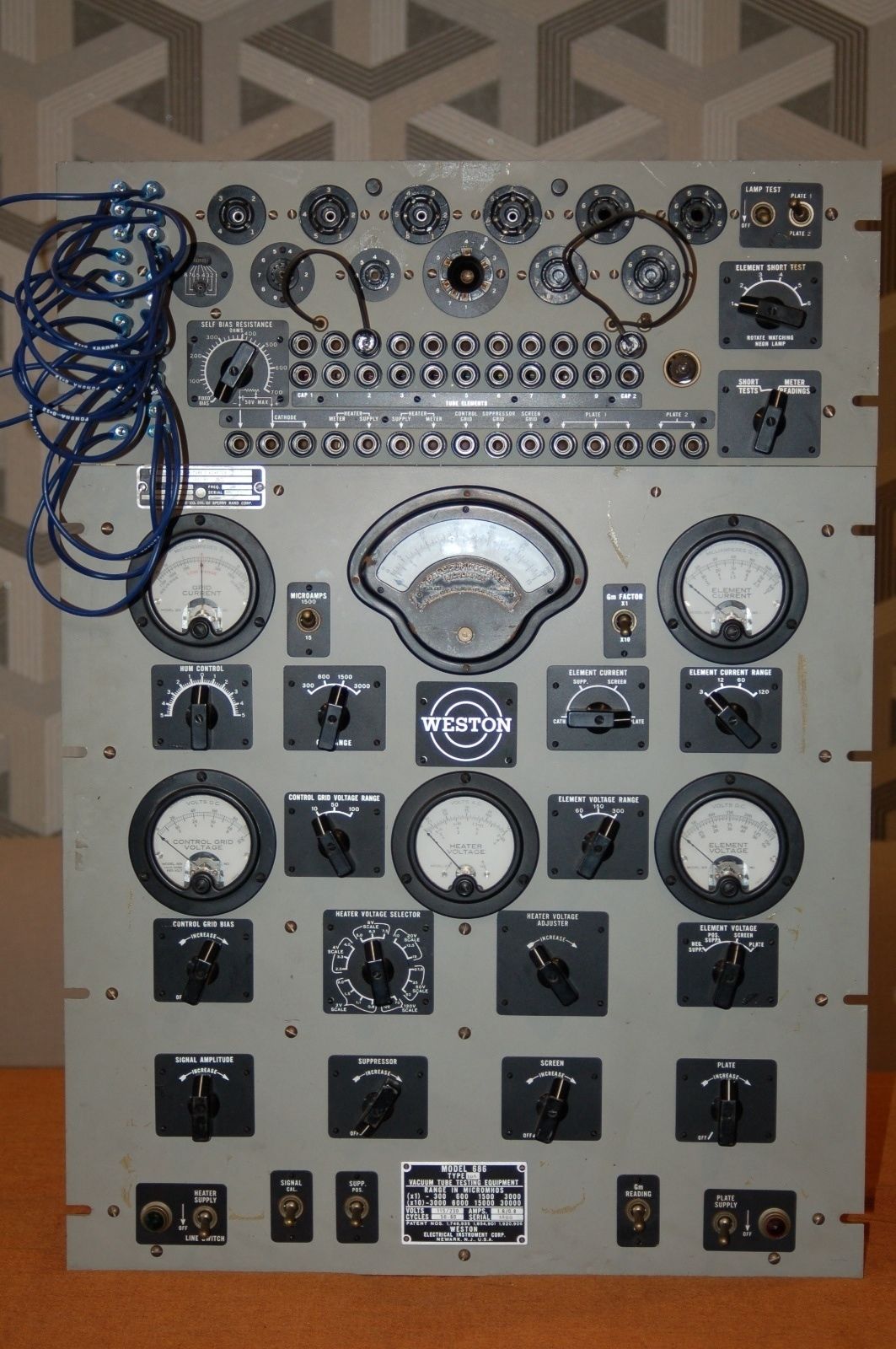
Main Advantage with this tester is all the voltages are presented and adjustable...up to 300V
With a little bit of modification of a voltage doubler, this tester is now capable to go to 600V, thus utilizing the 60V range on the Voltage meters for these readings..
All the internal resistors are wire wound spools...this is good for the reason they all scale corespondingly with respect to temperature co-efficient. Not so good when you need to replace just one.... Tungsten wire can be usefull for quickly obtaining a hard to find resistance value..
Another advantage are HEATERS are measured close to the socket, thus avoiding the classic voltage drop issue which is very common on most tube testers.
Problem with this tester is the non-linear behavior of the gm amplifier.... A re-design of the gm amplifier will bring this tester to very precice standards..
In the old days, the Weston 686 was manufactured in Newark, NJ just a few blocks south from RCA in Harrison, NJ....RCA was close to the Harrison Bridge and Route 280 .... A few blocks west of RCA was a Tung-Sol factory... a few blocks south of Tung-Sol would be Newark School of Engineering, now known as New Jersey Institute of Technology... This was PRIME TUBE territory... Not sure if I would drink the water in that area.....
These rack mount testers were used in tube production facilities to keep the QA as we all know and love in our beloved NOS valves... If measurements started to deviate, they could yell down the production line to tighten up on the grid wires...ect..
Hickok did fire back with the release of the Hickok 700 as a direct replacement, although by this time Weston had already made good relations with the tube manufacturers....
*****************************************************************************
The TV2 MIL TESTER
The TV2 has the advantage of displaying all tube element voltages... maybe ????
The TV2 has the potential to be a really precision tester, but is riddled with problems...
For one, the DC GROUND LOOPS in this unit are all over the place.... The grounds are wired in a "Daisy Chain" method... This affects the sensitive meters.. It takes a few hours of re-routing all the grounds in a STAR method, returning all DC currents to thier respective power supply source. All meters need to be re-routed so thier returns are independent and also STAR grounded to the supply.
The voltages that appear at the sockets are unfortunately not the same voltages the appear on the meters durring testing...One reason is the poor grounding scheme... Another reason is voltage droop in the small heater wires...The TV2 Heater Voltage sensing is done at the source. NOT at the sockets, Therefore you will read a moving target depending on heater load current... Re-wiring the heater lines with 18 Gauge wire is a royal pain but will reduce the meter sensing error to a more acceptable range.. Or simply know your losses..ie for example: 6.3V for small tubes and 6.45V for the power tubes will yield 6.3V durring testing...
One other issue is the accuracy of the plate voltage meter... There is a 47 Ohm resistor in the Plate and one in the cathode....while these resistors are harmless at very low currents and durring static unloaded voltage testing ...However, these will present a significant error durring testing power output tubes, because they are not within the sensing for the Plate Voltage meter....on the order of 6 to 8 volts of error... these need to be removed and replaced with small fuses to maintian protection.
Another source of error is the AC signal injection , which is 60 Hz @ 250mV magnitude at the low settings, A B C ...
The issue occurs when the DC bias is mixed with this AC signal injection waveform... The "filtered" DC bias will still contain a 120Hz ripple component after rectification of significant magnitude... This will produce an non sineusodial wave-form into the grid... In addition to this if your mains voltage is not clean it will further distort the injected signal.... The best solution is to modify bias circuit with a solid state negative voltage regulator to keep the ripple down.
Another weak spot is the SHUNT control... The TV2-A models had probably the best SHUNT pot, which was a CTS pot that was better than 1% Linearity ... Later TV2 units can use the brown Clarostat pots that were as bad as 10% Linearity or worse...These were 300 degree rotation 1K Wire Wound pots...
If you can't trust the number on your SHUNT pot dial, then all bets are off......
Merren Audio has stock piled high precision pots just for these applications...
It is advisable to increase the value of the % PERCENTAGE meter damping capacitor C2 to 1000uF, thus slowing down the meter significantly... First this removes the jitters from the meter and makes it easier to set and read. Second it reduces the possibility of needle damage from getting slammed in either direction, from operator error...
One mis-conception about the TV2 is that it is not capable of direct gm readings or measuring DC current..... In many cases the SHUNT can be set to 36 on a perfect pot and this will provide a direct reading of gm from the % percent scale.... Once again for true precision, this will have to be found using a calibration tube, since the linearity of the SHUNT pot may throw things off a bit, it will be roughly about 36.
To measure DC current, the SCREEN supply will substitute to provide voltage to the plate by re-adjusting the rotary knobs.... for tubes with SCREENS just use a tube saver with a jumper between PLATE and SCREEN....
For example, the meter reads 60% .... add a zero....you get 6000 or 6mA/v .. this is your gm..
*****************************************************************************
TRIPLETT 3444
I don't know where to begin.... will probably need 2 pages to rant away...
The 3444 has got to be the most over-rated tube tester....
It could have been one of the best testers ever made, but due to the flaky design is a big joke.
Blindly calibrating this unit to factory instructions and then believing the measurement results is ............ no comment..
The 3444 is riddled with so many flaws it takes a full re-design to get it acceptable and accurate.
Calibration result sheets look nice and pretty, because they are mostly unloaded readings...
Some techs will calibrate the 3444 to a reference 6L6 and everything looks wonderfull if all you test are 6L6 tubes...until you start testing with other tube types and watch the voltages deviating all over the place you will then see the issues..
Try reading the ACTUAL voltages and currents at the sockets while testing small signal tubes vs large power tubes.... The heater voltage will swing all over the map as well as the BIAS pot will measure some more error...Now look at the plate and Screen Voltages they may be up at 260V with small signal tube and as low as 234V to 240V durring power tube testing, while all along it is "suppose to" be at 250V Plate and 250V screen..... The Triplett engineers were well aware of these stacked errors and adjusted the test point conditions and acceptance levels to compensate for this....once again I blame the cost accountants.... The sad part is that the factory calibration papers allow for such large fluctuations in voltages to be in spec....so "technically" saying the tester is within factory specs means nothing as far as I am concerned..
The LINE LEVEL adjust is flawed due to measuring the full secondary Heater winding..... which is so far disconnected to what is really going on in the loading of the circuit....
Lets not kidd ourselves, the 6-Sigma probability of measuring 6.3 Volt tubes is like 98% when using these testers... Therefore we move the LINE-TEST sense point to the 6.3V winding and away from the transformer and closer to the tube sockets, right at the selectors....to minimize as much droop error... 5V and 12.6 Heater tubes are still better off this way then the normal wiring...
The next major fix is a negative voltage regulator for the BIAS supply.... Once this is locked in your almost out of the woods...
The BIAS pot needs to have 1% or better tracking Linearity or else the numbers you are reading on the dials are make believe......
Two ways to solve the High Voltage accuarcy from drooping to low durring higher current draw tubes.... The quick method is to put a small value resistor in one leg of the heater, since this will force the Line adjust to go higher to provide the proper heater voltage ...it will also increase the B+ voltages... With proper selection of resistor, The B+ can be made to track fairly well from small signal tubes to larger power tubes..
To make this a laboratory tester, use a voltage doubler with a 250V active regulator......
Another misnomer to clear up......There is no need to be an "Electrical Engineer" to calibrate these units, although it might help... Any smart tech is more than capable to deal with these simple circuits...
The 3444 power transformer was under-sized and was known for failing, this is why the 3444-A model was upgraded to a larger power transformer.
The 3444-A also changed the location of the LINE-TEST sensing voltage from where it was on the 3444 because it did not work well...as mentioned earlier..
When all is said and done....All the voltages in the 3444 should be regulated, with the exception of the Heater Voltage that is only dependent on the LINE-TEST adjustment...
Now you will have a Laboratory grade tester....
*****************************************************************************
Tektronix 570 Curve Tracer
Late model 570 with all the factory updates

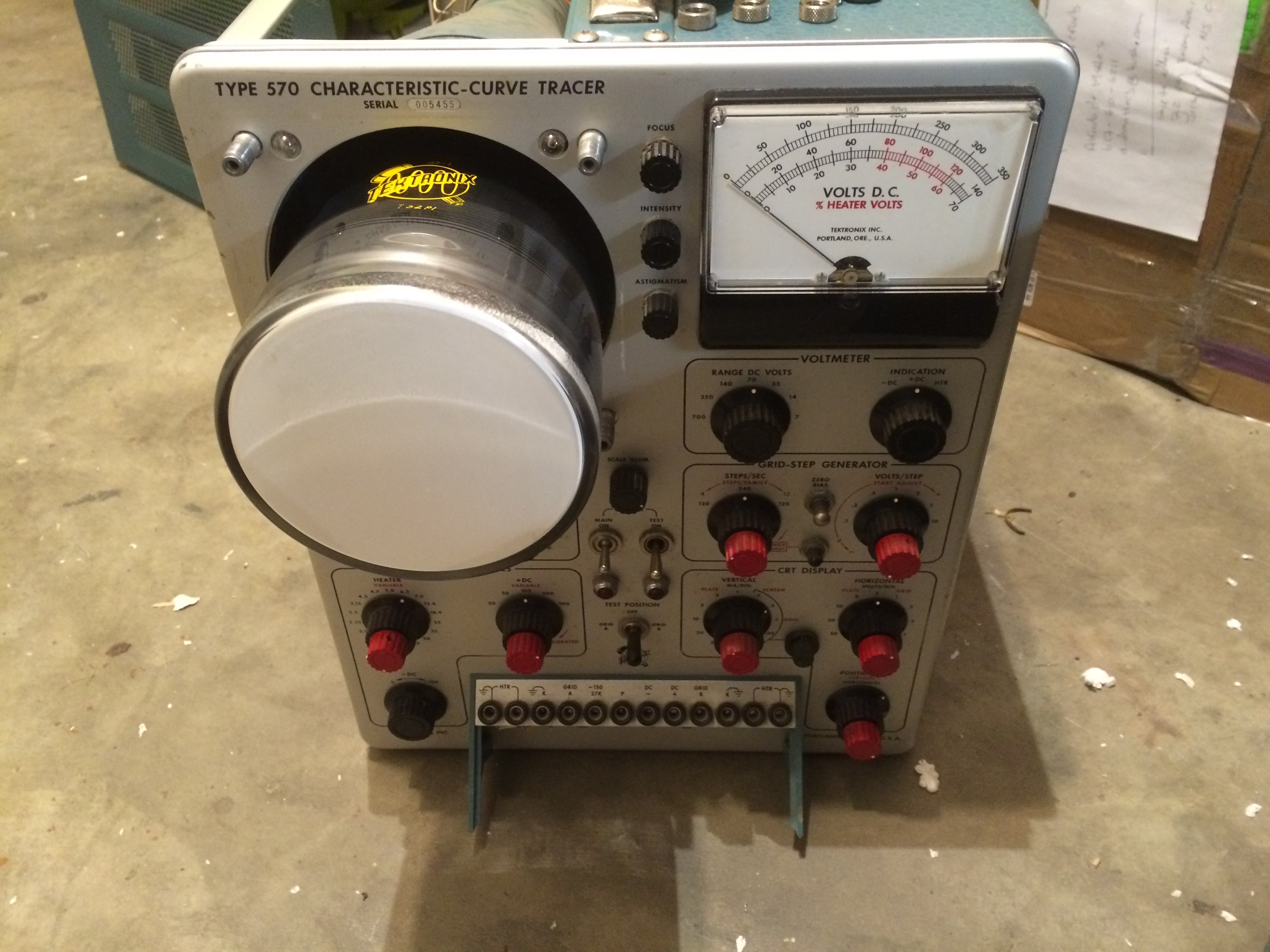
Durring a move...UPS had the pleasure of breaking the lower front frame... I was able to source a new one and it is now back to normal.... It was double boxed with 2 inches of foam and somehow UPS still managed to break it..go figure?
New lower front bracket ready for install
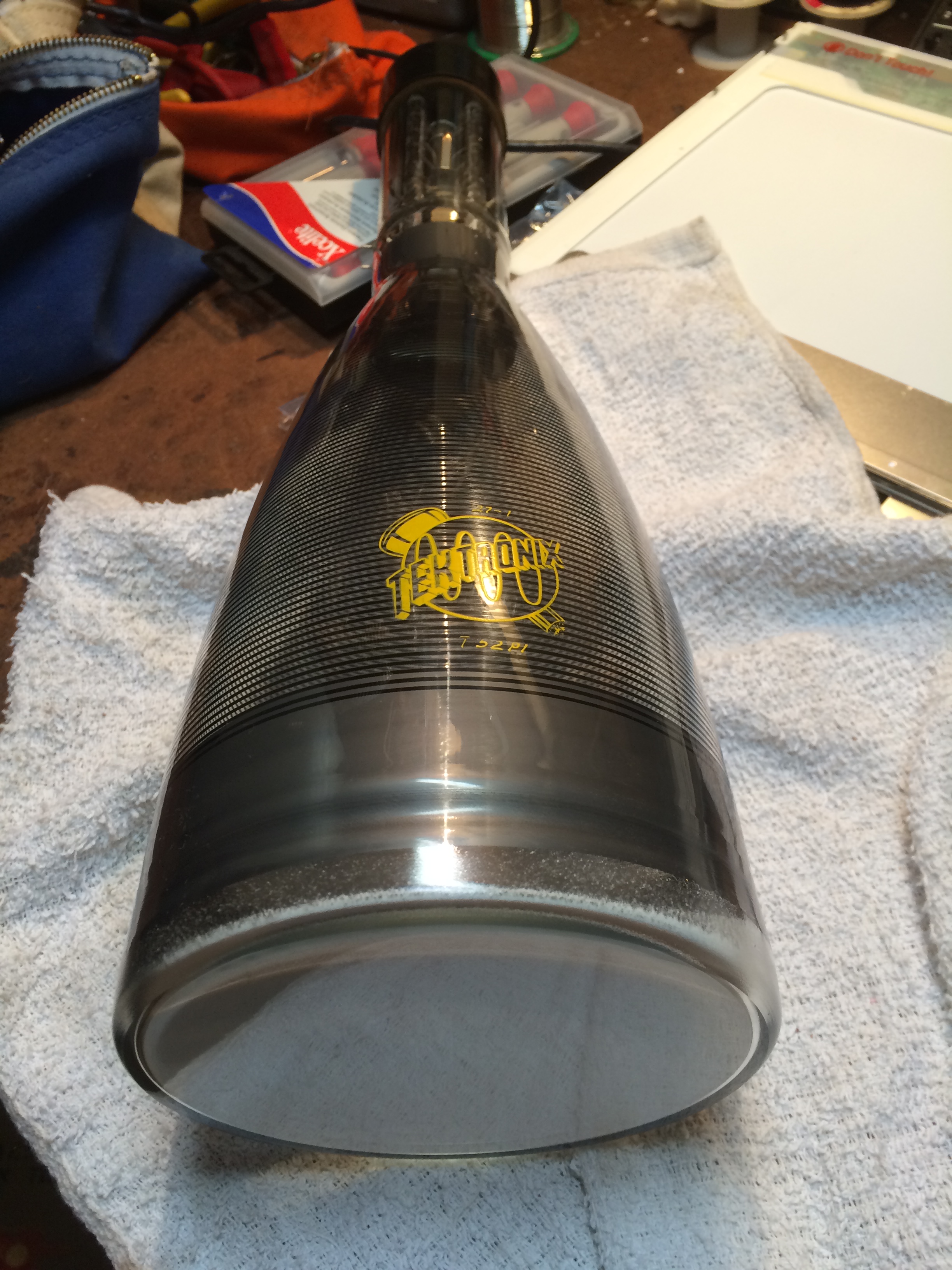
The OEM replacement TYPE 52 P1 CRT provides good decay time for static display such as curves.... unlike a dynamic display such as a O'scope...
If stuck, a 154-0344 CRT from a Tek 515 will also work ...Also known as a T55 P31....
The addition of PIN# 12 on the CRT will need to be hooked up...
Just need to put about 210V to pin 12 ... Make a divider of 110K and 120K between the 300V and +100V supplies..By-pass the 120K with a .01uF
The original 515 CRT Veritical Deflection beam deflectors are a bit more narrow angle, but should still work...
The Tek 570 Vertical Amplifier has way more headroom (330V) compared with the Tek 515 at (100V) ....
*****************************************************************************
AVO VCM 163
MERREN AUDIO has extensive experience in calibration, modification and design of tube testing equipment. Many times the "Factory" Service Manuals and Calibration procedures fall short of producing a reliable or accurate tester.
Pictured here are some of the testers we use at MERREN AUDIO.
Copyright 2011 Merren Audio. All rights reserved.
Merren Audio
CA
United States
ph: (310) 426-8726
sales
